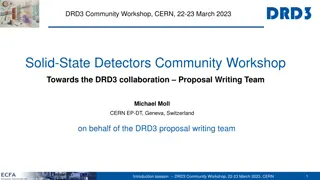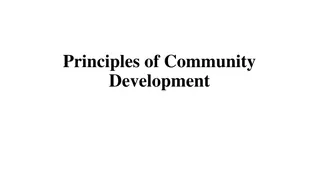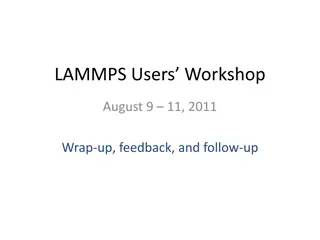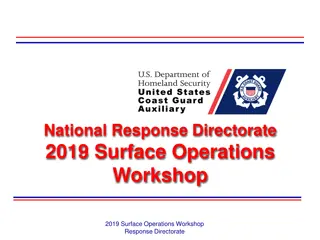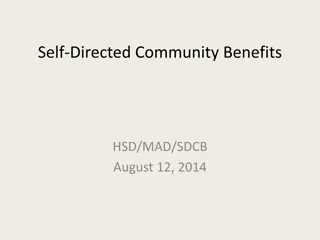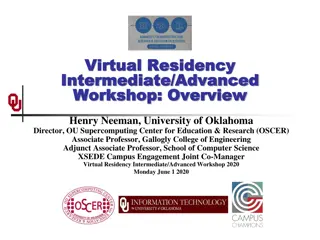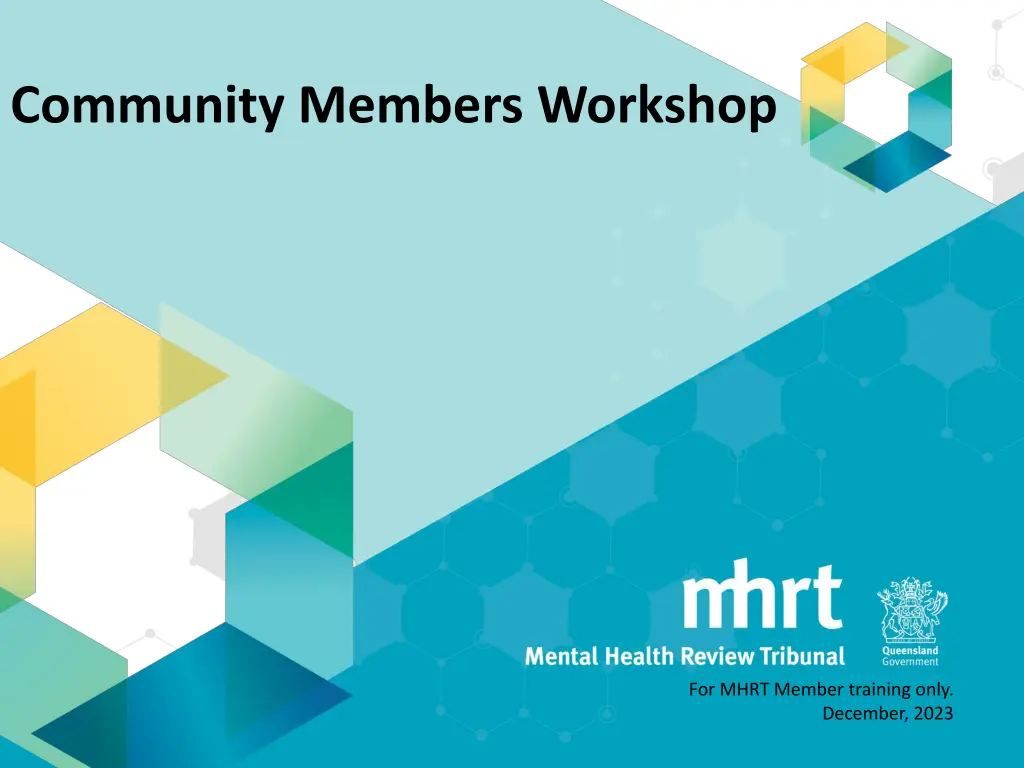
Understanding Community Member Roles in MHRT Training
Gain insights into the responsibilities of community members in Mental Health Review Tribunal (MHRT) training sessions. Discover the legal knowledge required, key terminology, relevant legislation, and the importance of understanding the law for effective decision-making within the MHRT framework.
Download Presentation

Please find below an Image/Link to download the presentation.
The content on the website is provided AS IS for your information and personal use only. It may not be sold, licensed, or shared on other websites without obtaining consent from the author. If you encounter any issues during the download, it is possible that the publisher has removed the file from their server.
You are allowed to download the files provided on this website for personal or commercial use, subject to the condition that they are used lawfully. All files are the property of their respective owners.
The content on the website is provided AS IS for your information and personal use only. It may not be sold, licensed, or shared on other websites without obtaining consent from the author.
E N D
Presentation Transcript
Community Members Workshop For MHRT Member training only. December, 2023
Introduction Purpose: to drill down on matters from a community member s perspective. to allow community members the opportunity to share their experiences and learn from each other. We want this to be workshop-style and interactive. Please actively contribute. Chatham house rules. 2
What is a community member? What does it mean to be a community member? 4
Do I need to know the legal stuff? Yes, to some extent. You are NOT expected to: know administrative law as well as a lawyer. give legal advice. interpret complex interactions between legislation or apply the legislation in complex or unique cases. You ARE expected to: be familiar with the relevant sections of the relevant legislation. read relevant cases from the Mental Health Court and understand their key principles. be able to preside on a TA review, if required. write a statement of reasons. We will take a look at each of those expectations now. 5
Key terminology Legislation, Act, Statute Written laws made by Parliament E.g. Mental Health Act 2016 Regulation Made under an Act where the Act authorises the making of the Regulation. A type of subsidiary legislation. Fills in details not covered by the Act. Made by people other than Parliament (e.g. the Governor). Case law Also known as common law . Law made by courts when they make decisions. Legislation and case law exist side by side. Legislation takes precedence. Can help us to know how to interpret legislation. 6
What legislation should I know? Most frequently referenced for MHRT: Mental Health Act 2016 Forensic Disability Act 2011 Human Rights Act 2019 Do I need to read the whole Act? No. You should be familiar with the sections that are most relevant to MHRT decision making. These are referenced in the training and resources that we provide. 7
Reading the legislation If you provide training and resources, why do I need to read the Act? Our training/resources are a useful guide only. Ultimately, you are directly applying the legislation and it is the words in the legislation that you will need to understand. As a Tribunal panel, the Mental Health Act sets out your obligations and the limits of your jurisdiction/authority. You cannot make decisions outside the jurisdiction or authority of what is set out in the Act. 8
Rules of statutory interpretation There are a number of rules that apply to reading and interpreting legislation (statutory interpretation). These can be common law rules (usually have Latin names) or rules set by other legislation (e.g. Acts Interpretation Act 1954). You don t need to know all of these rules legal members will be familiar with them. We will provide some tips based on these rules. 9
Tips for reading legislation Legislation is commonly split into Chapters with Chapters split into Parts and Parts further split into Divisions. Sometimes it is necessary to read not only the applicable section, but the sections that come before or after it to get the full picture. For example, section 10 may state a requirement to do X. The exceptions to that general rule may be contained in section 11. Some words have defined meanings. Definitions may appear: at the beginning of a Chapter, Part or Division (and apply to all the sections within that Chapter, Part or Division but not necessarily elsewhere). within the words of the section itself. in a list of defined terms that apply to the whole Act usually found in a Schedule at the end of the Act or a section at the beginning of the Act. 10
Tips for reading legislation Generally speaking, the meaning of a section is taken from the words in that section that is a plain reading of the section itself. If there is any doubt, or there can be multiple interpretations, there are some rules that can be applied: the Act can be read as a whole meaning what does that section mean in the context of the sections around it and the whole Act. the Act can be interpreted in a way as to give effect to its purpose or object. Regard can also be had to the documents published by Parliament which provide context to an Act. E.g. Explanatory Notes, Reading Speeches. However, these are not binding and the words in the legislation itself take precedence. 11
Amending legislation Acts can be amended by Parliament. An Act can be repealed and replaced with a whole new Act e.g. Mental Health Act 2000 Mental Health Act 2016. An Act can be passed that sets out changes to be made within an existing Act e.g. Health and Other Legislation Amendment Act 2022 that changed the sections in the Mental Health Act 2016 containing the ECT criteria. Make sure you are accessing the current version of an Act. 12
Where can I find legislation? Queensland: Office of the Queensland Parliamentary Counsel www.legislation.qld.gov.au Click In force legislation Can find Acts and Subordinate Legislation (e.g. Regulations) by year or alphabetically. Can choose a particular section from the list on the left. Can view the whole Act on the screen by clicking View whole Act or as a PDF by clicking PDF . 13
Case law When we refer to a case , what we are really talking about is the opinion or decision of the decision-maker. The important parts of a case are the principles of law that the decision-maker applied in coming to their conclusion that is, the relevant principles we can take from the case and apply in other situations. Lawyers refer to this as the ratiodecidendi . These principles form part of the law that the MHRT members take into account when making their decisions. 14
Finding relevant case law MHC Case Library decisions published by the MHC online (publicly available). The cases are categorised by topic. A summary of each case appears in the table and keywords can be searched by using Ctrl F. The case itself can be accessed by clicking the case name. MHC appeals decisions made by the MHC on appeal from the MHRT. Copies only available in deidentified form on MHRT s website with permission of the MHC President. These decisions are only for reference by MHRT members and copies of the reasons or summaries should not be shared with anyone. Human rights cases may be relevant o MHRT s jurisdiction or tribunal procedure. May be from various jurisdictions. A summary of each case appears in the table and keywords can be searched by using Ctrl F. The case itself can be accessed by clicking the case name. 15
Case citations A case citation is a standard way of uniquely describing a case it allows people to easily identify and locate a case. Some cases are compiled and published in a journal series, known as a law report, and there are called reported judgments. Where a case has not been published, it is considered unreported and will be cited slightly differently. Reported citation: Ngatayi v R (1980) 147 CLR 1 Unreported citation: In the matter of SAL [2019] QMHC 3 16
Use of case law It is important that MHRT members are familiar with decisions from other courts and tribunals that are relevant to how the MHRT interprets legislation and conducts its practice. While these decisions may not bind the MHRT, that is, may not dictate how the MHRT member must decide the matter, they are persuasive and are indicative of good tribunal decision-making. This is particularly the case in relation to decisions made by the Mental Health Court (MHC). Since many of the MHRT s decisions can be appealed to the MHC, a failure to follow earlier decisions of that court may mean that members would be making decisions they know would be overturned on appeal. 17
When and how to use a case First identify if there are any cases that are relevant to the decision you are making. If you find a relevant case, what are the principles the decision-maker applied in reaching their decision? E.g. in the case of BAC, the decision-maker (the MHC Judge) considered the applicable legislation and concluded that the scheme of the MHA2016 means that persons who are on forensic orders and suffer from only intellectual disability will not receive treatment under that order. You can then apply that principle to the matter at hand when considering a person who only has an intellectual disability. 18
Distinguishing a case There will be differences in the circumstances between the matter you are considering and a case that may be relevant. It is therefore important to understand the reasons why a case was decided in a particular way. It might be the case that the matter you are looking at is different in a material or key way to the case, so much so that the principle from the case no longer applies. 19
Presiding The MHA requires that the presiding member for a hearing is: Tribunal constituted by Presiding member 1 member The member More than 1 member Member decided by the President, so long as it is a lawyer when: the Tribunal is constituted by at least 3 members with at least 1 lawyer, 1 psychiatrist and 1 community member. hearing an application for an EA. hearing an application for NANP. There are certain duties that are primarily the responsibility of the presiding member, however, it is expected that all members are sufficiently prepared that they could undertake, some or all of the presiding duties with short notice. 20
Presiding duties There may be situations where: a legal member is not able to hear a scheduled TA e.g. conflict, unexpected illness. a legal member is able to sit on the panel but not preside e.g. technological difficulties. Presiding duties generally include: ensuring discussion with the Admin Delegate regarding attendances etc. if an observer is present, obtaining the patient s consent. commencing the hearing with a structured introduction. inviting the attendees to leave the room/videoconference line for deliberations and inviting them to return for the decision. delivering the decision and providing concluding remarks. preparing decision paperwork and ensuring all documentation for the hearing is complete and uploaded to the portal. 21
Preparation before a hearing A presiding member is generally responsible for ensuring all required preparation has been undertaken but all members are able to undertake the following tasks. Reviewing hearing material: review documentation is there any expected information or documentation that has not been provided? review hearing list who is the panel likely to want to hear from and are they listed as attending? liaising with Hearings Coordinators to request documents/attendees in time for hearing. 22
Preparation before a hearing cont. Avoiding unnecessary adjournments e.g: is the clinical report signed and by whom? is an interpreter required? if previously adjourned what was the reason and has that been addressed? if CO requested is the request clear as to what information is considered confidential and how the criteria in section 722 apply? are there any cultural considerations the panel should have regard to that may require extra preparation? 23
Preparation before a hearing cont. Planning the hearing proceedings: who may wish to attend the hearing and do they have a right to do so? if a CO is requested, how will the panel obtain the required evidence and what steps are necessary? if there is a VIS, what steps are necessary for the panel to take evidence (e.g. has the author requested it go the patient etc)? what is a suitable introduction to the hearing (taking account of the particular needs of the patient and other attendees)? who may the panel want to hear from and in what order? 24
Preparation before a hearing cont. Preparing for pre-hearing discussion by identifying: if the hearing is remote, how the members will communicate with each other during the hearing and for deliberations? who the panel will permit to attend the hearing? the responsibilities of the members (e.g. who is recording the deliberations)? the suggested process for any VIS or CO? the key issues to be considered and determined by the panel specific to the matter? what additional evidence the panel may require / which questions the panel will ask of the attendees and which members will ask those questions? 25
During a hearing The presiding member is responsible for directing the hearing. This involves: ensuring parties have time to make submissions / express their views, wishes and preferences. guiding those giving evidence to keep to the relevant topics. ensuring sufficient evidence is gathered from attendees. allowing sufficient opportunity for questions from other members. keeping to the time scheduled for the matter. 26
Writing a statement of reasons MHRT s policy is that the presiding member is expected to prepare the SOR. However, in circumstances where the presiding member is on leave or is not otherwise in a position to prepare the SOR, another member may be required to do so. In any case, all members of the panel should review and provide feedback on a draft SOR before it is submitted to the Tribunal office for distribution. 27
What are you looking for? Is it accurate: Does the SOR accord with your recollection of the evidence? Does the SOR accurately set out the reasons why the panel decided the way it did? If you have doubts, ask to see the decision paperwork. Reasoning: Does the SOR clearly explain the link between the evidence and the conclusions/findings of the Tribunal? Proof-reading: Is the document formatted correctly? Are there typographical or spelling errors? We will look at the contents of SORs later in today s workshop. 28
Legal - Summary You are not expected to be a lawyer. You do have to feel comfortable reading the relevant legislation and case law to understand what it means and how it guides your decision making. Where you are uncertain about how to interpret a section of an Act or a particular case, ask your legal member. You can also call the Tribunal office for guidance Annette, Monique, Kimberley or Matthew. 29
Do I need to know the medical stuff? Yes, to some extent. You are NOT expected to: have the knowledge and expertise of a medical member. be able to diagnose, give advice as to treatment, conduct clinical risk assessments. interpret medical records. You ARE expected to: be familiar with common terminology used in hearings/documents. have knowledge of diagnoses, treatments, side effects, recovery paths of the type currently referenced in hearings/documents. be able to read medical reports and hear clinical evidence to draw conclusions regarding the criteria in the Act. 30
Clinical terminology There is a lot of medical jargon and you are not expected to speak it fluently. However, to be able to understanding written and oral evidence, it is important to know commonly used terminology. Refer to the information sheets on the MHRT members website. 31
Clinical terminology cont. Know relevant organisations/agencies/bodies: e.g. CFOS, ARMC. Know the common role titles and responsibilities: Clinical structure for medical practitioners: e.g. RMO, Registrar, SMO Treating team roles e.g. Case manager, forensic liaison officer Known common abbreviations: time recording: e.g. 10/52 10 weeks short-hand: e.g. Tx treatment; Dx diagnosis Phrases: pro re nata as needed / when necessary bis in die twice a day 32
Clinical terminology mental state exam A mental status/state exam (MSE) is a structured assessment of a person s behavioural and cognitive functioning. You may see reference to these in clinical reports or independent assessment medical reports. Generally follow the same order and you may see these headings referenced in the reports: appearance physical appearance behaviour manner of relating to clinician, activity level speech fluency, rate, volume, tone mood predominant emotion affect current observed emotional state thought stream/speed, form, content perception altered bodily experiences, hallucinations cognition level of consciousness, orientation, attention, memory, ability insight and judgment. 33
Clinical terminology mental state exam Some examples: AH Auditory hallucinations DTO / DTS Danger to others / Danger to self LOA Loss of association O x3 Orientated as to person, place and time PMR Psychomotor retardation SI Suicidal ideation WNL Within normal limits 34
Clinical knowledge You are not expected to have the depth and breadth of knowledge of a psychiatrist. Where you hold registration as a clinician, it is expected that you maintain current knowledge sufficient for that registration/qualification. A base level of knowledge for matters that are commonly the subject of evidence before the Tribunal is required. See the Information sheets on the MHRT members website for general information about diagnoses and treatment. 35
Clinical knowledge cont. For a particular condition/illness: a general description of the nature of the illness. common symptoms. impact that such symptoms may have on a person s functioning, including potential risk factors. common treatments. general illness and recovery trajectory / paths. For treatments: when a treatment may not be appropriate for a person. potential side effects. time for a particular treatment to start working. 36
Where can I find clinical information? You want to make sure that the information you are accessing is reliable, current and sufficiently easy to understand that it adds to your knowledge rather than confusing the issue. If you have questions when preparing for a hearing, reach out to the medical member on your panel. The MHRT has made some resources available on the members website and via our in-house courses. Reputable organisations: e.g. RANZCP, Queensland Health. For treatments (on QH network): choiceandmedication.org/Queensland health. If you have specific questions that you cannot find a reliable answer for, contact the Tribunal office and we will do what we can to assist. 37
Analysing clinical evidence It is expected that members will review all evidence available as part of their preparation that is, medical reports should not be left to the medical member to read. Clinical evidence may be complex, voluminous or poorly expressed. This can make it challenging to read through and identify he relevant information. For concepts you are not familiar with, use the resources above to find out more information. In the next section, we will look at risk assessments and analysing evidence in more detail. 38
Medical - summary You are not required to be able to diagnose a person or conduct risk assessments. You should be familiar with common terminology and general information about the diagnoses that the MHRT frequently sees. For assistance in understanding clinical evidence, speak to your medical member. 39
Risk assessment When we refer to risk assessment by Tribunal members, we are not talking about the risk assessment that a clinician does. Clinical risk assessment: uses standardised tools, methodologies and clinical judgment for the purposes of treatment and care, and risk mitigation (and management) strategies. Tribunal risk assessment: applying a legal test from the Act to the evidence presented (which may include clinical risk assessments) to make the required decision. 41
What is risk? Lots of definitions of risk one is: The probability of an unwanted event that results in negative consequences. We could think of risk as the product between two variables - outcome (including seriousness of outcome) and likelihood. Risk is often discussed in terms of the relationship between static and dynamic factors e.g. frequency, severity, patterns, imminence, protective factors. For the purposes of the Act we are only concerned with the risk in the relevant test. 42
Conceptualising risk Future oriented: what is the behaviour of concern, what is the potential damage or harm likely arising from it, what is the probability it will happen. Relevant evidence: risk factors. imminence. impact. Clinicians speak of risk formulation : drawing together personality, history, mentals state, environment, potential causes, protective factors, and the changes in any of these, aiming to determine how serious is the risk and how imminent is the risk. It is important to recognise that neither clinicians nor MHRT members are expected to be able to predict the future. 43
Types of risk What type of risk are we looking for? risk that the absence of involuntary treatment is likely to result in imminent serious harm to the person or others, or the person suffering serious mental or physical deterioration (s12 treatment criteria). risk to the safety of the community, including the risk of serious harm to other persons or property (confirming FO, TSO, deciding category) We are looking for evidence that helps us determine whether such risk exists, how likely it is that the harm will occur and the nature of the consequences if it did. 44
Risk factors We need to be able to articulate the link between the evidence and our conclusions about risk. For example, the fact that a person uses illicit substances may be relevant, but stating that fact in itself, is not sufficient to conclude that there is risk of the type we are looking for. You need more evidence which links the fact to the risk. 45
Demonstrating the link Psychotic symptoms (including paranoia) increase Increased risk of aggression due to paranoia Mental illness Illicit Mental state deterioration substances 46
Identifying risk What information in the clinical report for Lucy Stemple may indicate risk to you? What type of risk does the information indicate and why? What s the link? 47
Levels of risk Levels fluctuate. Ask the team how the level of risk was assessed usually weighing evidence, balancing factors and predicting future state. Once risk level identified: how stable is it? A rating is only a snapshot in time. what factors may increase or decrease it? is the risk conditional on something happening or not happening? any barriers to mitigating the risk? 48
Levels of risk An important consideration when determining whether an FO can be revoked and a TSO made. Decision as to whether risk is low enough to revoke an FO/ high enough that a TSO should be made on FO revocation can be difficult. Refer to MHRT masterclass on FO vs TSO. Refer to deidentified appeals on MHRT members website for decisions regarding FO vs TSO. 49
FO vs TSO Confirmation of the order: if the order is necessary because of the person s mental condition to protect the safety of the community, including from the risk of serious harm to other persons or property. FO TSO: if the MHRT considers a TSO, but not an FO, is necessary, because of the person s mental condition, to protect the safety of the community, including from the risk of serious harm to other persons or property. How do you know if an FO or TSO is required? What are the differences between the two? 50



